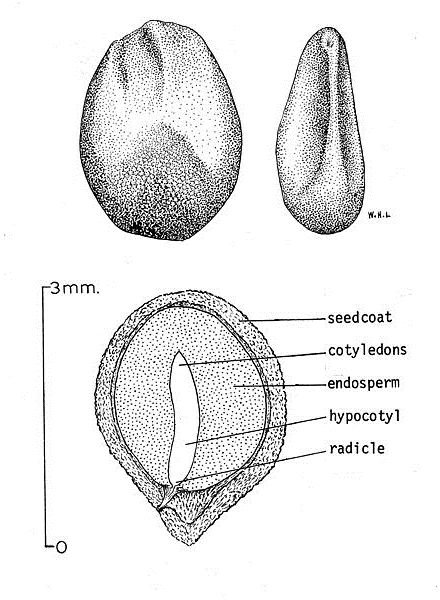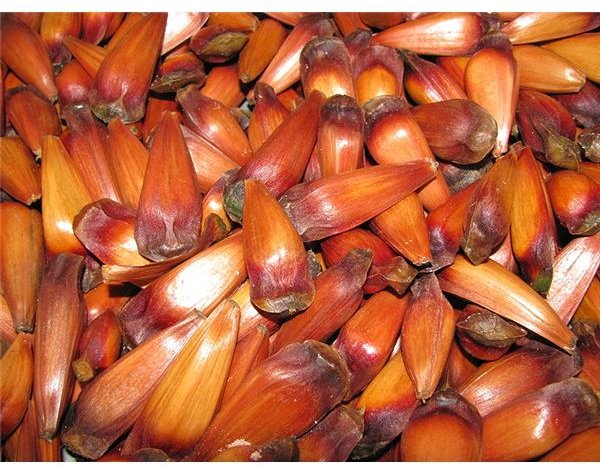The Parts of a Seed Homework Help: The Seed Coat, Endosperm, Embryo and More
Why Seeds Are Important
Seeds are everywhere in the world. They allow trees to grow, plants to produce fruit, and even give much needed shade when it is too hot outside. They are transported in many different ways, such as through wind, gravity, and even through other animals.
Even though we take seeds for granted, they provide a vital food source for us, as well as beauty to our landscape when they bloom into flowers. It is important to remember that they are several varieties of seeds, and even though each is unique, so we can’t eat every kind of seed. Still, they have roughly the same parts that allow them to germinate and grow into plants.
There are three main parts of a seed. The outer part is called the seed coat which allows protection for the seed. There are also two inner parts of a seed. The endosperm gives food and nutrients to the whole seed. The last part is the embryo. You can think of this part as a miniature part of a plant that is waiting to grow. Many of these parts have multiple sections and provide a role in the development of a plant.
Seed Coat
Seeds are really simple in their physical makeup. The seed coat is rather simple because it provides

protection for the seed before it germinates–that is, before it starts to grow. Before germination, a seed waits in dormancy, which means that it is waiting to germinate. During this time, the seed coat protects the inner parts of the seed such as the embryo and the endosperm.
Endosperm

While the seed lays dormant, the endosperm serves its purpose by providing food for the entire seed. The precursor of the embryo’s cotyledon, the endosperm will provide food for the seed until it begins to germinate. It then passes on its function to the cotyledon which will serve as a resource of food until the embryo’s embryonic leaves arise out of the soil.
The Embryo and Its Parts
The next part is called the embryo. The embryo is composed of three different parts that start to come alive when the seed begins to

germinate. Germination occurs when the seed finds an adequate water source and sets a chain of events that allows the plant to come to life. First, the embryo absorbs the water and swells, shattering the seed coat in the process. Next, the primary root (or radicle) shoots into the earth, which allows the plant to begin drawing nutrients and water. This part provides a firm foundation for the plant to begin growth.
After this happens, two other parts of the embryo spring into action. For example, the cotyledon is a part of the embryo which provides food for the plant while the seed begins to grow. The cotyledon will continue to provide food for the plant until the embryonic leaves emerge and put an end to its purpose.
Embryonic leaves are responsible for providing a long-term energy source for the plant. This happens when the embryonic leaves shoot through the earth and are supported by the hypocotyl (which is simply the stem that supports the embryonic leaves). When the embryonic leaves reach the surface, they use light from the sun to undergo photosynthesis. Photosynthesis provides food for the plant and allows it to continue growing.
Fun tip: Soak a lima bean overnight in the fridge with a paper towel. In the morning ask an adult to slice it open so you can see inside of it.
References
Sources:
- Full Gardens. “Information on seeds, seed types, discussion on hybrid versus heirloom seeds.” https://www.fullgardens.com/seeds.php
- Miller and Levine. Biology. “Inside a Seed.” https://www.teachersdomain.org/resource/tdc02.sci.life.stru.insideseed/
- University of Arizona. “Botany: Plant Parts and Functions.” https://ag.arizona.edu/pubs/garden/mg/botany/seeds.html
Images:
- wikicommons/LadyofHats. https://commons.wikimedia.org/wiki/File:Avocado_seed_diagram-en.svg
- wikicommons/Natural Resources Conservation Service. https://commons.wikimedia.org/wiki/File:Jojoba.seed.jpg
- wikicommons/Rodrigomorante. https://commons.wikimedia.org/wiki/File:Araucaria_seeds.JPG
- wikicommons/USDA-NRCS PLANTS Database. https://commons.wikimedia.org/wiki/File:Solanum_seed.jpg
